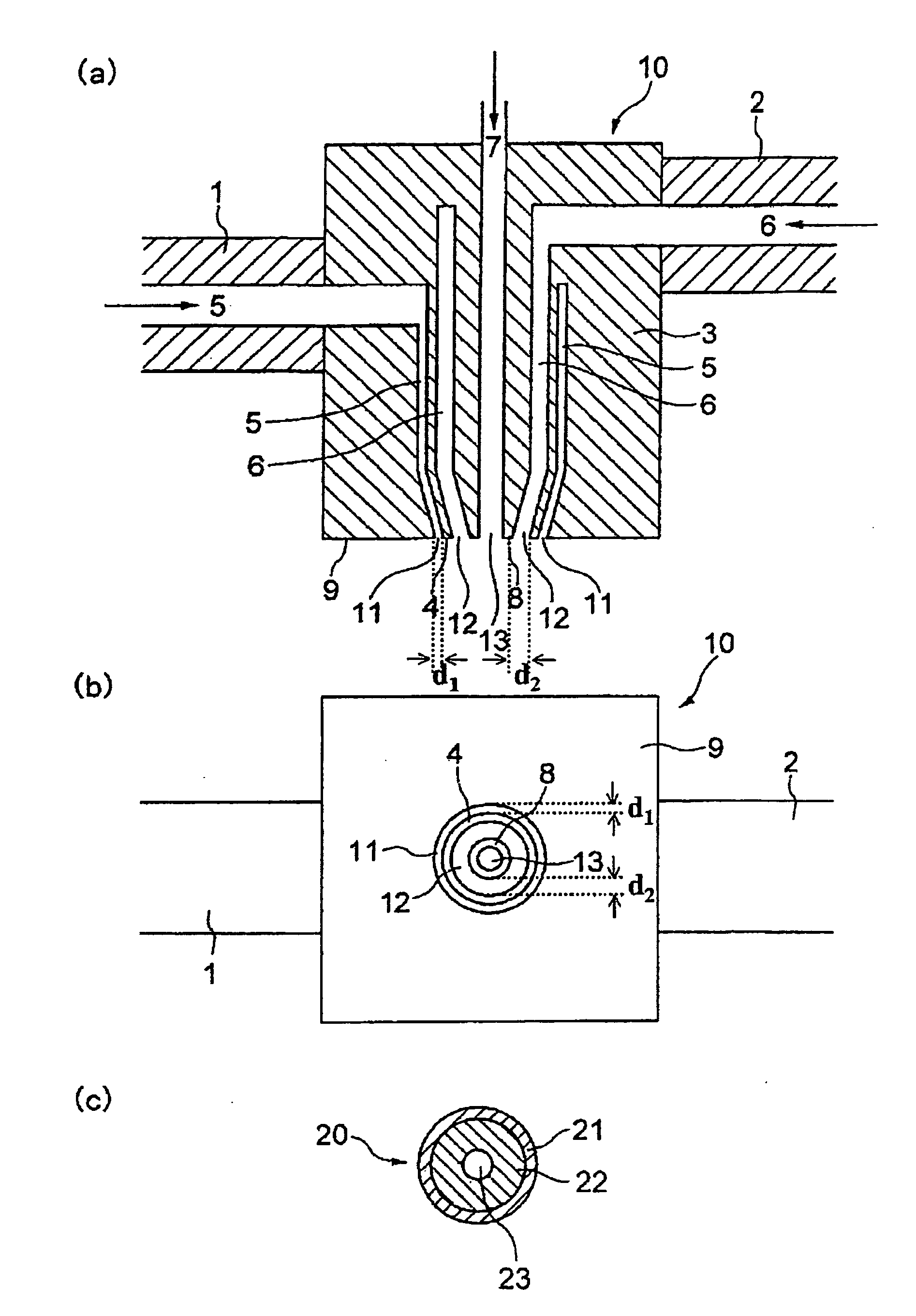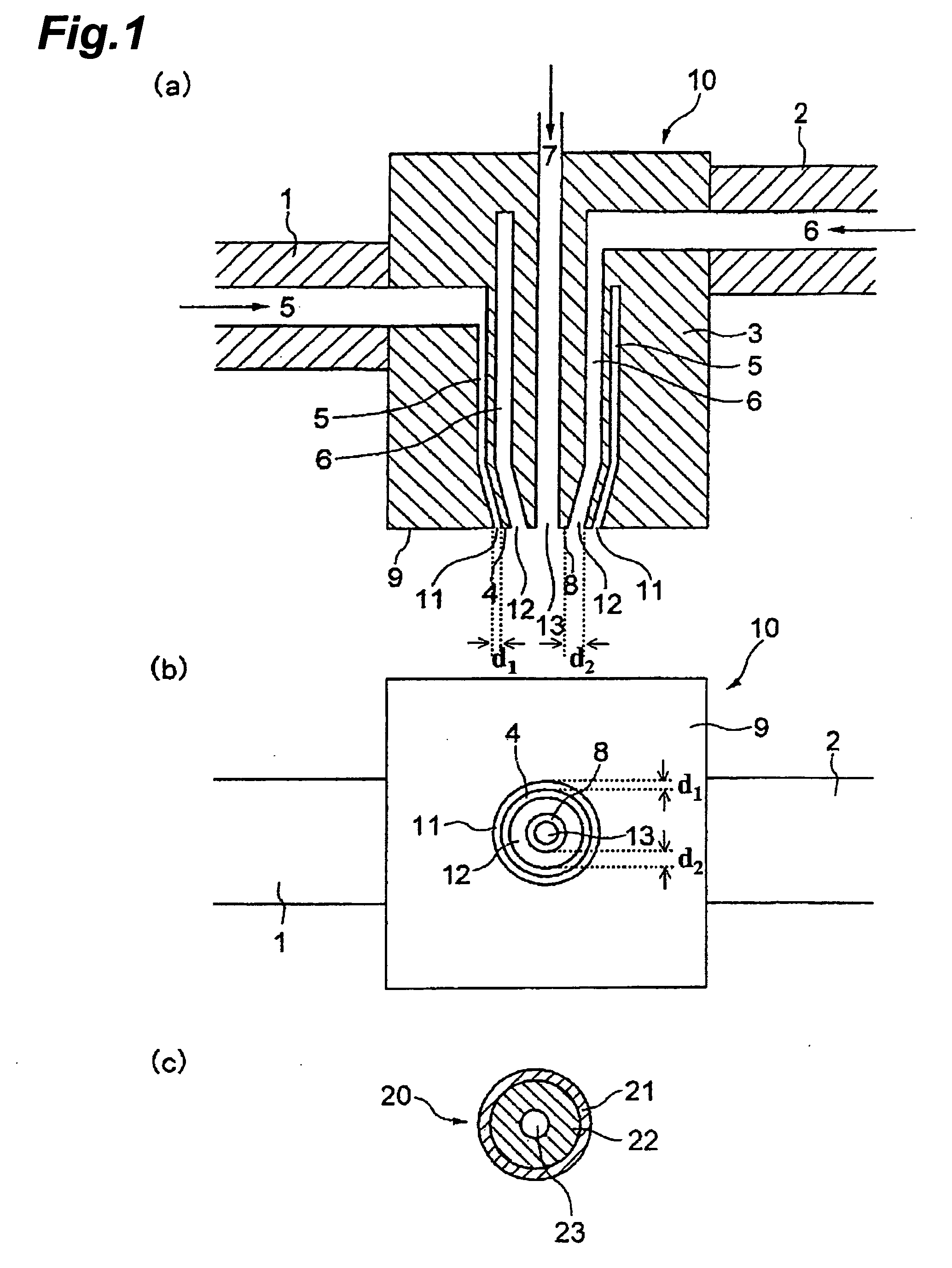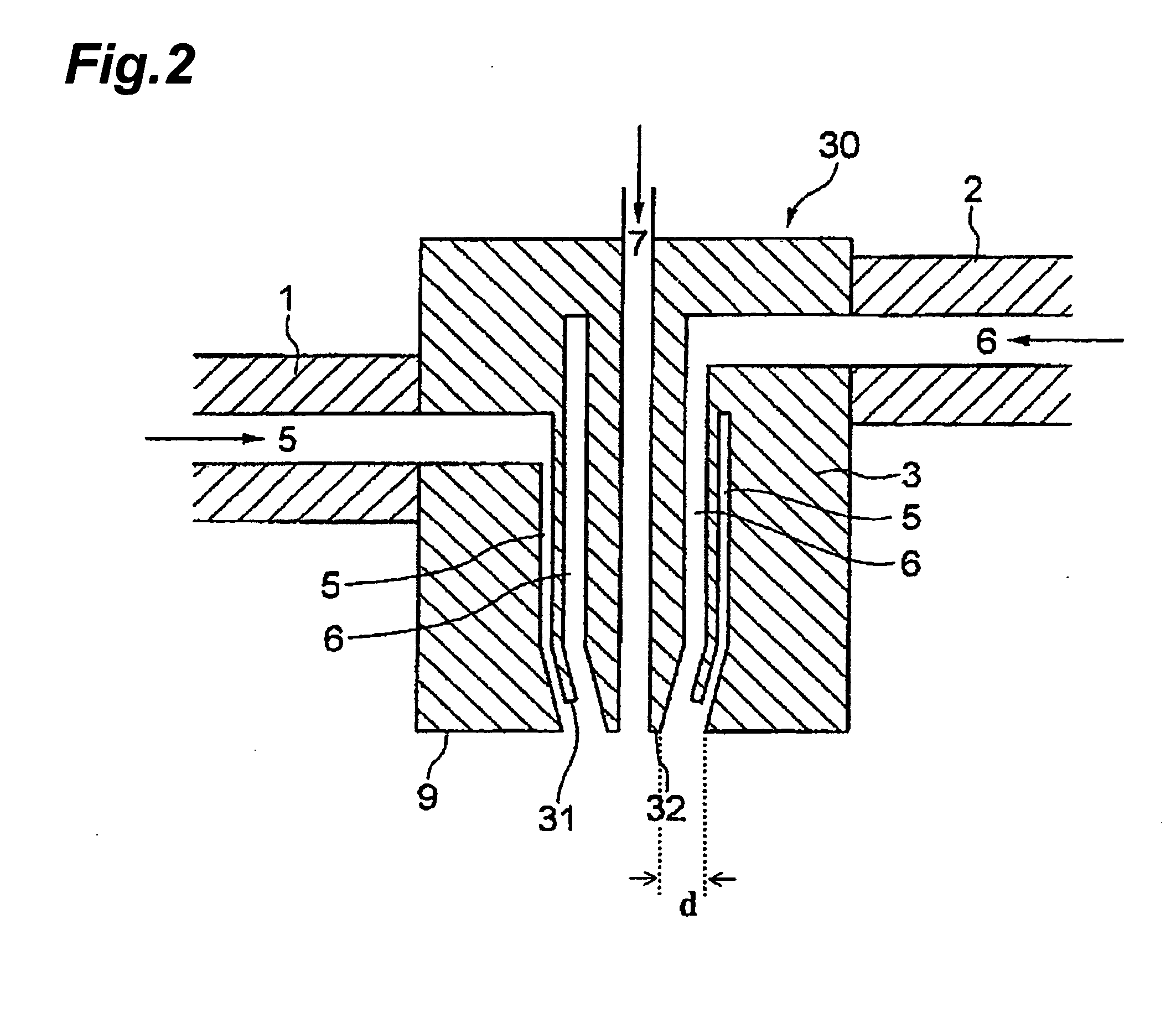Porous multilayered hollow-fiber membrane and process for producing the same
- Summary
- Abstract
- Description
- Claims
- Application Information
AI Technical Summary
Benefits of technology
Problems solved by technology
Method used
Image
Examples
example 1
[0153]A vinylidene fluoride homopolymer was used as the thermoplastic resin, a mixture of di(2-ethylhexyl) phthalate and dibutyl phthalate was used as the organic liquid, and a silica fine powder was used as the inorganic fine powder. A two-layer hollow fiber membrane was melt-extruded using two extruders utilizing a hollow fiber molding nozzle shown in FIG. 2. An outer-layer molten mixture (a) had a composition in which vinylidene fluoride homopolymer: bis(2-ethylhexyl) phthalate: dibutyl phthalate: silica fine powder=40.0:30.8:6.2:23.0 (mass ratio) (volume ratio: 32.2:44.4:8.4:15). An inner-layer molten mixture (b) had a composition in which vinylidene fluoride homopolymer:bis(2-ethylhexyl) phthalate: dibutyl phthalate: silica fine powder=40.0:35.1:1.9:23.0 (mass ratio) (volume ratio: 32.0:50.0:2.6:14.9). Air was used as a hollow-portion-forming fluid. The molten mixture was extruded from a hollow fiber molding nozzle (outer diameter: 2.00 mm, inner diameter: 0.92 mm) at a resin t...
example 2
[0159]A porous two-layer hollow fiber membrane was obtained in the same manner as in Example 1 except for using an outer-layer molten mixture (a) having a composition in which vinylidene fluoride homopolymer: bis(2-ethylhexyl) phthalate: dibutyl phthalate: silica fine powder=34:33.8:6.8:25.4 (mass ratio) and an inner-layer molten mixture (b) having a composition in which vinylidene fluoride homopolymer:bis(2-ethylhexyl) phthalate:dibutyl phthalate:silica fine powder=36:35.3:5.0:23.7 (mass ratio).
[0160]FIG. 13 shows an electron microscope image of the outer surface of the porous two-layer hollow fiber membrane at a magnification of 5000. FIG. 14 shows an electron microscope image of a portion around the outer surface of the cross section at a magnification of 5000. FIG. 15 shows an electron microscope image of a portion around the outer surface of the cross section at a magnification of 1000. FIG. 16 shows an electron microscope image of the center of the cross section at a magnifica...
example 3
[0162]A porous two-layer hollow fiber membrane was obtained in the same manner as in Example 1 except for using an outer-layer molten mixture (a) having a composition in which vinylidene fluoride homopolymer:(2-ethylhexyl) phthalate:dibutyl phthalate=40.0:36.0:24.0 (mass ratio).
[0163]The resulting porous two-layer hollow fiber membrane did not show interface non-uniformity and had a high roundness. As a result of cross-sectional observation using an electron microscope, it was confirmed that the blocking layer and the support layer had an isotropic three-dimensional mesh structure without macro-voids. The property evaluation results of the resulting membrane are shown in Table 2. The porous two-layer hollow fiber membrane had a high pure water permeation rate, latex blocking rate, and mechanical strength.
PUM
| Property | Measurement | Unit |
|---|---|---|
| Fraction | aaaaa | aaaaa |
| Pore size | aaaaa | aaaaa |
| Pore size | aaaaa | aaaaa |
Abstract
Description
Claims
Application Information
 Login to View More
Login to View More - R&D
- Intellectual Property
- Life Sciences
- Materials
- Tech Scout
- Unparalleled Data Quality
- Higher Quality Content
- 60% Fewer Hallucinations
Browse by: Latest US Patents, China's latest patents, Technical Efficacy Thesaurus, Application Domain, Technology Topic, Popular Technical Reports.
© 2025 PatSnap. All rights reserved.Legal|Privacy policy|Modern Slavery Act Transparency Statement|Sitemap|About US| Contact US: help@patsnap.com



